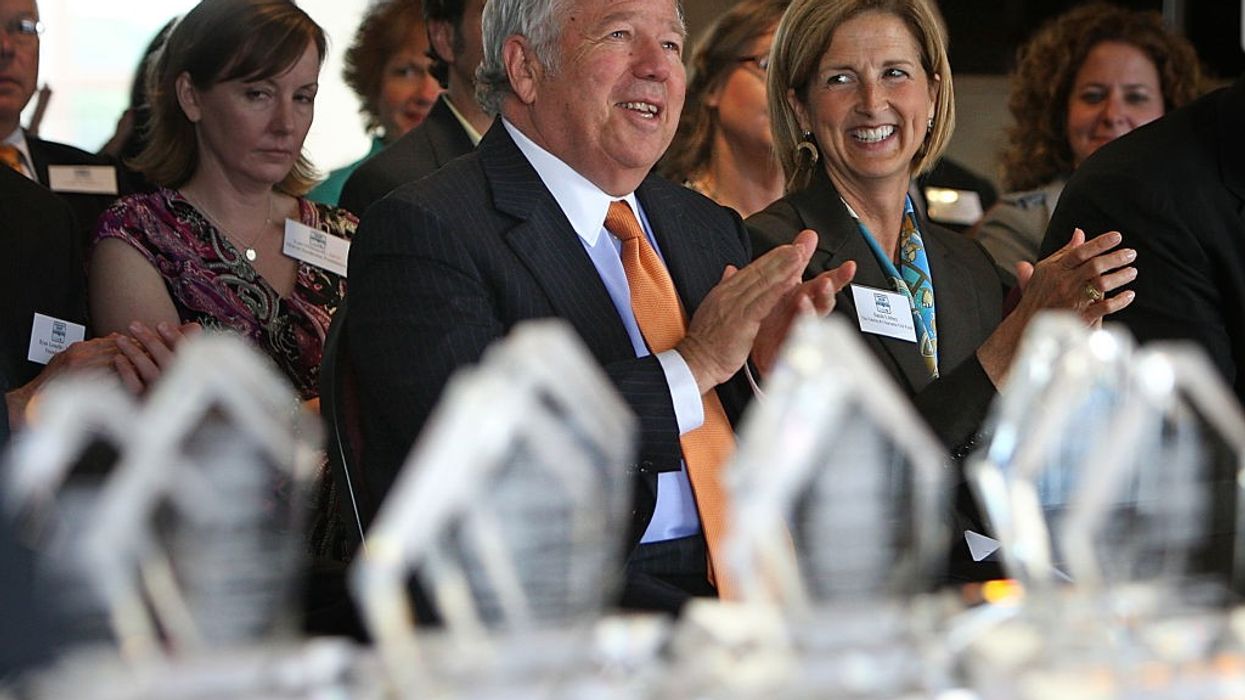How Billionaires Like Marc Benioff Use Philanthropy To Skirt Around Public Scrutiny
Benioff has given over $1 billion to San Francisco, but this money has an agenda: to keep critics off his back.
Marc Benioff is a classic case of a bad-faith billionaire philanthropist. He donates hundreds of millions of dollars to the communities he lives in—San Francisco and the Big Island of Hawaii—to skirt around public scrutiny.
Benioff, a Bay-Area native whose net worth hovers under $9 billion, and his company Salesforce have donated over $1 billion to San Francisco—as of October this year. As for Hawaii, where Benioff bought land in 2000, he and his wife Lynne have graciously given $250 million in philanthropy. Most of this money has gone to building or expanding hospitals.
But his philanthropy has an agenda: to keep critics off his back.
Another big-money billionaire, Mark Cuban, whose net worth sits around $6 billion, shared his thoughts on philanthropic efforts like Benioff’s over the weekend during an episode of Real Time with Bill Mahr. Sitting beside Andrew Ross Sorkin, Cuban said he prefers to donate anonymously and questions the intentions of those who do differently.
Instead of focusing his time crafting an apology, Benioff used his shot to yell about how much money he has given to the community.
“Why would you put your name on a building or a hospital if not for leverage, for power, for influence?” he said.
Well said, Mr. Cuban. Power, influence, leverage–and an opportunity to excuse bad behavior–are exactly what Mr. Benioff seeks in spending so much, tax-deductable, money on children’s hospitals with his name plastered on the side.
This became clear in the aftermath of Benioff’s poorly received–yet hardly surprising–comments to the New York Times earlier this month, in which he suggested his former-foe-now-friend, President Donald Trump, send the National Guard to San Francisco.
“We don’t have enough cops, so if they can be cops, I’m all for it,” Benioff said.
The fallout was immediate. Local leaders condemned his comments, and Ron Conway, a Democratic donor and Silicon Valley venture capitalist, publicly resigned from Salesforce Inc.’s Philanthropic Foundation.
“It saddens me immensely to say that with your recent comments, and failure to understand their impact, I now barely recognize the person I have so long admired,” Conway said in an email to Benioff last week.
Benioff, for his part, has been trying to walk back his comments—by bragging about how much money he has donated to San Francisco: “No one is doing more philanthropy in San Francisco this year than I am,” he told the San Francisco Standard after his controversial comments hit airwaves across the country. “Nobody has given more than my family. Nobody has given more than my company.”
Instead of focusing his time crafting an apology, Benioff used his shot to yell about how much money he has given to the community.
And this isn’t the first time he’s tried using his philanthropy to get out of hot water. When NPR reporter Dana Kerr went to report on Benioff in Hawaii—and his suspicious spending spree on real estate—the billionaire tried to persuade her into writing a positive story.
“He started texting me all the time. His texts were all about the philanthropy that he’s doing in Hawaii… He also connected me with people who know about his donations so I could talk to them,” Kerr said on an NPR podcast in March 2024. “The whole thing really felt like a pressure campaign.”
Sounds similar to his strategy with the SF Standard last week: reminding reporters of his philanthropic history to deter criticism. What happened to honesty–or apologies?
Benioff waited an entire week before apologizing for his National Guard comments–on where else but X.
But the damage is done. Reverberations from his mini scandal remain around the country. Questions of whether Trump is going too far, even for Republicans, by sending the National Guard to blue cities abound.
During a televised mayoral debate in New York City last week, all three contenders—Democrat Zohran Mamdani, Independent Andrew Cuomo, and GOP candidate Curtis Silwa—said they would not support Trump sending the National Guard to the city’s streets as mayor.
Trump has, so far, sent the National Guard to “fight crime” in five US cities—all led by Democratic mayors: Washington, DC; Los Angeles, California; Portland, Oregon; Memphis, Tennessee; and Chicago, Illinois. Lawmakers from those states have said military presence is not necessary, except for Tennessee’s Republican Gov. Bill Lee.
The president continues to threaten other cities with military presence, and in some cases, has taken it a step further: In Boston, led by Mayor Michelle Wu, he’s raised the idea of moving the FIFA World Cup. (Trump is good pals with FIFA president Gianni Infantino, who was curiously present at the Gaza Peace Summit.)
Meanwhile, Benioff’s magazine Time, which he purchased in 2018 “to help address a crisis of Trust,” just put Trump on its cover for the second time this year.
Trump, however, hates the picture.
“Time Magazine wrote a relatively good story about me, but the picture may be the Worst of All Time,” the president wrote on Truth Social in the early hours of Wednesday.
While our commander in chief addressed his cover photo, he has yet to comment directly on Benioff’s request. Instead, he’s built up a lie around the billionaire’s contentious comments, citing, falsely, that “government officials” in California have called for the National Guard’s deployment.
“We have great support in San Francisco,” Trump told FBI Director Kash Patel at a White House conference this week. “So, I’d like to recommend that for inclusion, maybe in your next group.”


